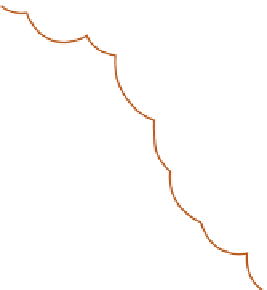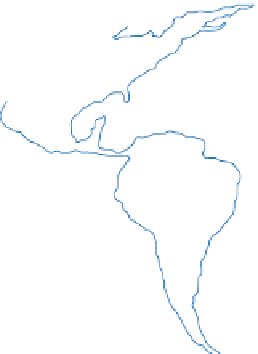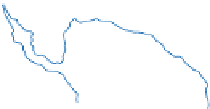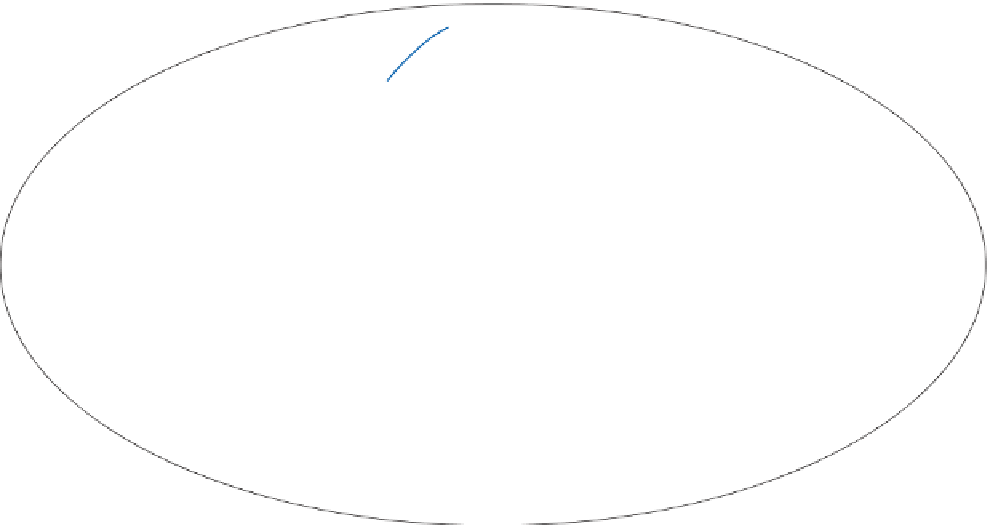Geoscience Reference
In-Depth Information
NORTH
ATLANTIC
OCEAN
North
America
Baja
California
Euroasia
Western
Atlantic
Trench
Mid-Atlantic
Ridge
South
America
Africa
PACIFIC
OCEAN
East
Pacific
Rise
SOUTH
ATLANTIC
OCEAN
Central
Indian
Trench
Australia
South
Australia
Trench
Ancient Landmass
Modern Landmass
Subduction Zone (triangles point in the
direction of subduction)
Antarctica
Sea Floor Spreading Ridge
Figure 28.4
PALEOMAP projection of Earth's tectonic configuration 50 Ma in the future, well beyond current concerns.
Source: C.R. Scotese
weighs
10
6
MN m
-2
over its small ground area. Along with large
dams and their impounded reservoirs serving conurba-
tions, such structures are considered capable of triggering
significant earthquakes. Improved building codes, earth-
quake proofing and other mitigation and forecasting
schemes may reduce damage. However, we can identify
high-risk areas where all the above environmental, socio-
economic and anthropogenic forcing factors converge.
They include, almost inevitably, the San Francisco qLos
Angeles section of the San Andreas fault zone; the Tokyo
qNagoya qKobe region of Japan, complicated by the
close proximity of two subduction zones; and the coastal
Shenyang qTianjin, Shanghai and T'ai-pei regions of
China and Taiwan.
Beyond the immediate coastline, oceanic changes in
area and depth resulting from isostatic/eustatic trends are
insignificant at decadal to centennial time scales. Instead,
the greatest oceanic influence in a world of climate change
is through their role in heat and water redistribution by
virtue of their volume, specific heat capacity, density,
10
10
7
kg and exerts a downforce of
5
seismic energy is released by
intraplate
earthquakes, the
state of crustal stress in the British Isles, far from major
plate boundaries, illustrates why such areas are not
earthquake-free zones. Distant, mid-Atlantic eastwards
ridge push and sea-floor spreading generate back-pressure
on our Atlantic margin, against the resistance of the
Eurasian plate - resulting in frequent although scarcely-
felt earthquakes, only occasionally
5 on the Richter
Scale.
In addition to anthropogenic climate change qsea-
level rise qglacio-iso/eustatic and seismic impacts on
crustal stress, human activity also stimulates significant
induced seismicity
through mining and groundwater
abstraction, dam and reservoir construction, under-
ground waste disposal and large-scale urban and infra-
structure development (
Plate 28.2
).
Rapid urbanization,
especially in economically emergent states like China and
India, is coupled with high-rise construction to resolve
urban space shortage
and
create prestigious record-
breaking skyscrapers. The current tallest building, T'ai-pei
101 in the capital of Taiwan, exceeds 500 m in height,

















































































































































































































